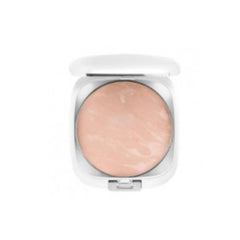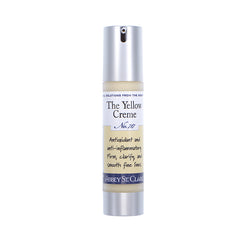Lip Gloss versus Lip Polish - and why you want to go gluten-free

If you should dare look at the ingredients list on most lip products, you’ll find it can be a maze to decipher the fancy Latin terms and various code names for chemicals. In this article, we’ll explore the red flags to look for on labels, so you can make healthier choices when it comes to the products you use on your lips. Plus, we’ll explain the difference between lip polish and lip gloss, and underscore why it’s best to choose gluten-free lip products.
Debunking the gluten myth
A common misconception is that gluten can be absorbed through the skin, which is a myth, according to the Mayo Clinic. The gluten molecules are simply too large to pass through the skin, making it virtually impossible for gluten-containing skin products or cosmetics to pose a danger to individuals with celiac disease or gluten sensitivity (with one exception). Gluten proteins become a problem when ingested, eliciting an immune response during digestion. It must reach the small intestine - which is not going to happen when you’re applying it to your skin.
However, the one caveat: Issues can arise when you’re applying the substance to your lips. It’s inevitable that you’ll ingest a small amount of your lip products when talking, eating, re-applying makeup, or licking your lips. That’s all it can take for it to make its way to the small intestine and stir up trouble.
For those without gluten-sensitivity, that may seem like a non-issue, but for the six percent who struggle with gluten intolerance, it can spell discomfort and, in severe cases, even life-threatening circumstances.
Common ingredients in conventional lip products
When shopping for cosmetics, it’s not always obvious if products contain gluten, especially since manufacturers often use alternate names to hide certain ingredients. You won’t likely see wheat, barley, or rye listed on the back of cosmetic products, but you may find Triticum Vulgare (Wheat), Hordeum Vulgare (Barley), or certain types of Vitamin E that are derived from wheat germ.
Aside from gluten, conventional lip products often contain irritating fillers and preservatives that can lead to health issues. Ever notice how some lip products smell or taste synthetic or like chemicals? Unfortunately, that’s because the majority of lip products contain a smorgasbord of chemicals disguised with seemingly benign labels to mask what’s hiding inside. The reason for this is that all these additives make products aesthetically pleasing. And, for many, that is a priority.
Let’s take a peek at what that tube of candy apple red lipstick or shimmering lip gloss that’s tugging at your heartstrings likely contains, and find out some undesirable ingredients you’ll want to keep a watchful eye out for.
Good things to look for:
Good-for-you lip products are infused with an antioxidant (often vegetable source Vitamin E) to repair and enhance lip smoothness that lingers even after removal. Hydrating botanical oils and waxes soften and condition lips and provide structure for easy application. A sunscreen is helpful for protection.
Realize also that choosing lipstick/lip gloss are often emotional decisions and thus you must be happy with the result. Do not always be afraid of sometimes complex ingredient names. If you know your source, these additives add to the pleasure of using a lip color product, are benign, and add to the texture, longevity, and coloration.
Ingredients of concern*:
Cochineal Beetles. A common red colorant derived from boiling, drying, and crushing the female carcasses of cochineal beetles. To avoid having these pesky bugs find their way into your cosmetic bag, look for the following ingredients on ingredient lists:
- Carmine
- Carminic Acid Lake
- Cochineal/Cochineal Extract
- Dactylopius Extract
- Ci 75470
- Carminic Acid
- E120
- Carmine 5297
- B Rose Liquid
- Crimson Lake
- Natural Red 4
Animal Byproducts. If you ever notice an oily residue that some lip products leave behind, it could be from tallow or animal byproducts that come from the carcasses of slaughtered animals. They are often labeled as Hydrolyzed Collagen, Caprylic Acid, Lauric Acid, Myristic Acid, Oleic Acid, Oleyl Oleate, Oleyl Stearate, Palmitic Acid, Stearic Acid, or Tarrow. Cosmetic labs continue to find botanical substitutes for animal sources.
*Petroleum Jelly/Mineral Oil. These are somewhat misplaced on our listing but we put them here because they have been a topic of misinformation. Petroleum jelly’s soothing properties were discovered by the men who greased joints on oil rigs and found their hands were protected. It is a petrochemical that can seal off the skin to some extent, but good antioxidants do also. There is now a botanical form of “petroleum jelly” which is very safe. Similarly, mineral oil has also been derided by some major cosmetic companies, but studies continue to find that is benign, non-irritating, and moisturizing. Mineral oil was long the sole ingredient in baby oil, used on thousands of tender skin with no ill effect. And many a baby bottom was slathered with petroleum jelly to prevent rash and keep skin soft.
Heavy Metals. Early cosmetics obtained their color from elemental metals. lead, iron, nickel, arsenic, cadmium, aluminum, chromium, and antimony. More recently, there were reports of mercury in mascara. They can easily find their way into your skin and digestive tract and have been linked to certain cancers, neurological disorders, and reproductive issues.
Go gluten-free with your pout
Why play Russian roulette with hazardous ingredients when you can opt for healthier and safer options that you can use with confidence: Natural, gluten-free lip gloss and lip polish.
LIP POLISH: WHAT IS IT? A gentle exfoliant that buffs away dead cells and flakes on your lips (and the surrounding skin - read “lip lines”), leaving your lips smooth, soft, and supple. It acts as a natural humectant, allows lip color to glide on, and helps extend the wear time of lip colors.
What it’s used for: Chapped lips, dullness, and flakiness. Helps with plumping up the lips as well.
Result: Soft, smooth lips that are perfectly prepped for a lipstick or lip gloss.
How to use: Massage into lip area using soft, circular motions, leaving it on the lip area for about 5-10 minutes. Ultimate hydration occurs when the polish is not washed off but wears off naturally.
Gluten-free solution: Abbey St Clare’s Lip Bliss Conditioning Polish gently buffs away dry flakes with its brown sugar crystals. Natural botanical oils and butters hydrate and lock in moisture and reduce the appearance of fine lines. 100% pure and natural – no chemicals, parabens, or harsh ingredients.
LIP GLOSS: WHAT IS IT? Gives a gentle to bright burst of natural, sheer color and a shiny or wet look on lips.
How to use: Use the applicator wand and apply to both lips. Dab a little gloss on the center of your bottom lip, alone or over lipstick, to enhance the appearance of fuller lips.
Vegan and gluten-free solution: Our nourishing vegan, gluten-free Antioxidant Lip Gloss adds a gentle pop of color and shine. Each one is packed with plant-based extracts to enhance the condition of your lips while you wear it. It looks gorgeous by itself or layered with a lipstick.
No one should sacrifice health and safety in the name of beauty. Abbey St Clare offers natural lip products with good-for-you ingredients that look beautiful. The trifecta of natural pigments, long-wearing formulas, and moisturizing ingredients help you look great with confidence.
Leave a comment
Comments will be approved before showing up.
Also in Abbey St Clare Blog

The Wheel is Turning. Abbey St. Clare has Closed.
Hello Friends,
The wheel is turning. Transitions are on the horizon. It is with regret that after almost twenty years, Abbey St. Clare is winding down as retirement and a relocation take place in the near future. We will continue taking orders through September 15.

Fix These 5 Hair-Washing Mistakes For Healthier Hair
Is your hair feeling brittle? Scalp dry? Locks not as lustrous as you want them to be? It’s possible you’re damaging your hair with five hair-washing mistakes.
If you follow these guidelines, you will see significant improvement in your hair and scalp health.

Pamper Your Skin and Elevate Your Mood With Essential Oils
Have you ever caught a whiff of cinnamon and felt a boost in your mood instantly? Do you feel calmer and more at ease when using lavender lotion before bed? If you said yes, it’s not just a figment of your imagination!
Ask anybody who uses essential oils regularly, and they’ll probably agree: these natural botanicals can have powerful, positive effects on your mood and overall wellness.



